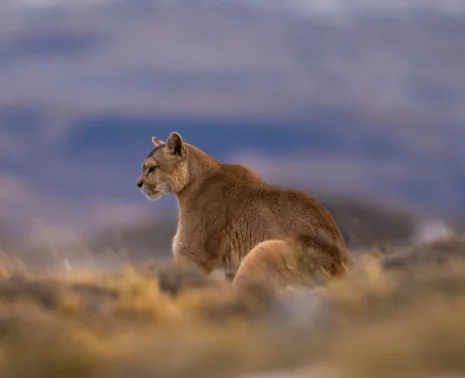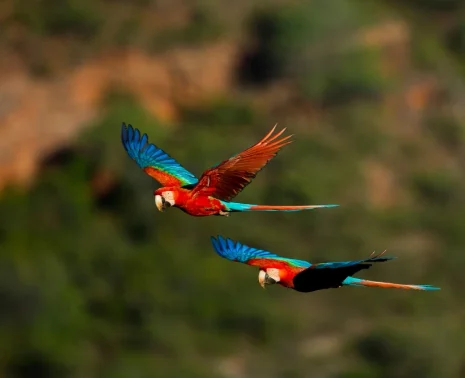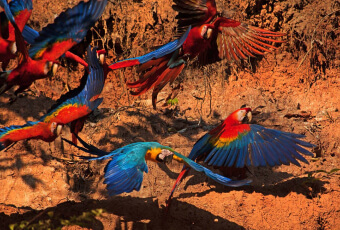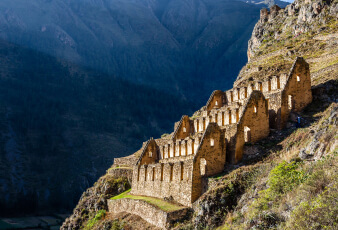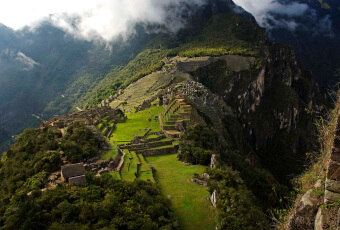
It’s one thing to see a whale. It’s another to feel one. The ocean stills. A hush falls. Then, a tail breaches the surface with grace and power, and you’re left in awe.
Welcome to the best whale watching in South America, where giants roam the seas and every encounter reminds us of nature’s majesty. From the warm Pacific currents of Peru to the icy edges of Patagonia, this continent offers world-class marine encounters. With Kuoda, your experience is deeply personal, expertly guided, and always unforgettable.
Peru: Gentle Giants of the North

In northern Peru, the convergence of the cold Humboldt Current with warm equatorial waters creates one of the richest marine ecosystems on the planet. Between July and October, this region becomes a nursery for humpback whales migrating from Antarctica to give birth and raise their young in the calm shallows.
One of the most incredible destinations for whale watching is Los Órganos, where you can witness humpbacks breaching in synchrony and hear their eerie, melodic songs through underwater hydrophones. On a Kuoda-arranged excursion, you might even find yourself observing a mother and calf in a quiet moment of rest or play, guided by a marine biologist who explains every movement with insight and care.
If you want the best whale watching in South America with intimacy and warmth, northern Peru delivers it wrapped in sun, salt, and wonder.
Chile: The Vast and the Rare

Chile offers a contrasting marine world, raw, remote, and wildly beautiful. From December to May, the coastline becomes a feeding ground for a range of cetaceans. Most impressive is the elusive blue whale, which makes occasional appearances in Chilean Patagonia and the southern fjords.
In Francisco Coloane Marine Park, humpbacks can be seen launching into the air with glaciers as a backdrop. In Punta de Choros, visitors might glimpse sperm whales and bottlenose dolphins, while the Guaitecas Archipelago offers encounters in tranquil, unspoiled waters.
This is one of the best whale watching destinations in South America for those craving wild terrain, biodiversity, and a taste of scientific exploration. With Kuoda, your journey includes sustainable lodging, private boat charters, and access to conservation experts who share stories from the front lines of ocean protection.
Argentina: Close Encounters in Patagonia

Few experiences compare to standing on the shores of Argentina’s Valdés Peninsula and watching a southern right whale glide past, sometimes just meters away. From June through mid-December, these majestic creatures arrive in the protected waters near Puerto Madryn to breed and nurse their young.
This is classic whale watching, done the Kuoda way: with private guides, boutique accommodations, and immersive interpretation of one of nature’s greatest migrations. The drama intensifies in October and November when orcas use their intelligence and agility to beach themselves in pursuit of seals, a rare and raw display of predation seen in only a few places worldwide.
When it comes to accessible, powerful wildlife encounters, Argentina offers some of the best whale watching in South America. And with Kuoda, you experience it in a way that’s meaningful, respectful, and unforgettable.
Why Whale Watching Matters
Beyond the spectacle, whale watching is about connection. With every sighting, we remember our place in a vast, intelligent ecosystem. Kuoda is committed to making these moments impactful without compromising the animals’ well-being. We partner only with certified, conservation-first operators. Our excursions support local research, responsible tourism, and the preservation of delicate marine environments.
This isn’t mass tourism. It’s mindful exploration, a chance to see the world as it was meant to be.
FAQs: Best Whale Watching in South America
When is the best time to go?
Peru: July to October (humpback nursery season)
Chile: December to May (blue whale feeding season)
Argentina: June to December (southern right whales and orcas)
Which destination offers the best whale watching in South America?
It depends on what you’re hoping to see. Argentina offers close-to-shore sightings, Chile provides rare species and remote beauty, and Peru excels in intimate, peaceful observations. Kuoda can help you choose or combine them for the ultimate marine journey.
Is it eco-friendly?
Yes, when done right. Kuoda ensures all excursions follow strict environmental standards and contribute to local sustainability efforts.
Can I build a custom itinerary around whale watching?
Absolutely. We often combine whale watching with visits to wine country, the Amazon, Patagonia, or even cultural deep dives in coastal cities.
Let Kuoda Take You There
There is a moment, just after the breach, when everything feels still. No noise. No motion. Just the memory of a tail vanishing into blue.
That moment stays with you.
At Kuoda, we design travel that honors those moments. Whether it’s Peru’s warm nursery waters, Chile’s remote channels, or Argentina’s dramatic coastlines, we offer the best whale watching in South America and we do it with care, purpose, and unforgettable grace.
Let us craft your private, custom journey among the giants.
Puma in the Andes: The Elusive Guardian of South America’s Peaks
The Puma: A Symbol of Power and Mystery in the Andes The puma (Puma concolor) is one of South America’s...
Read PostLuxury Birding Peru: A Private Journey into the World’s Richest Avian Paradise
With over 1,800 bird species spread across cloud forests, deserts, wetlands, mountains, and rainforest, Peru i...
Read PostLuxury Wildlife Experiences in South America: Encounter Nature with Elegance
South America is a continent alive with movement, color, and sound. It is home to some of the most biodiverse ...
Read Post










